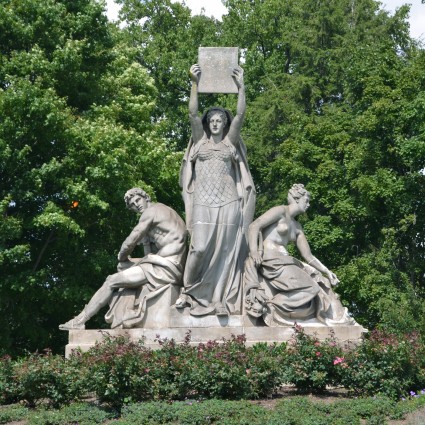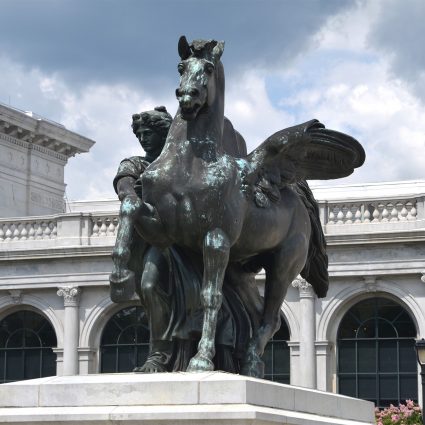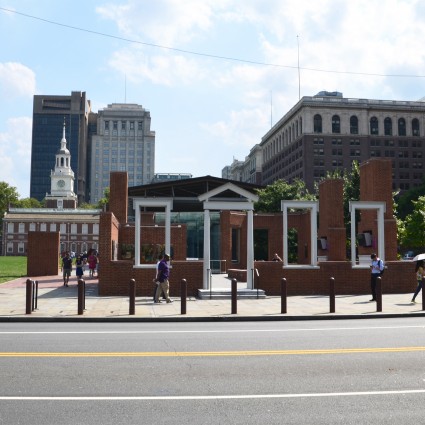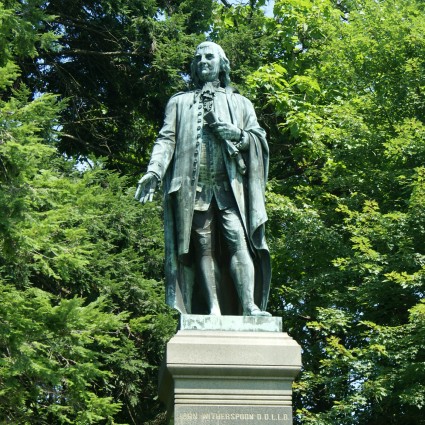At A Glance
The sculpture represents Republican Freedom
Religious Liberty was artist Sir Moses Jacob Ezekiel’s first major commission
The artist was awarded the Michel Beer Prix de Rome but deferred the scholarship for a year in order to work on the sculpture
Dedicated on Thanksgiving Day, November 30, 1876, in Fairmount Park, the monument was relocated in 1984 to a site near the National Museum of American Jewish History and the Liberty Bell
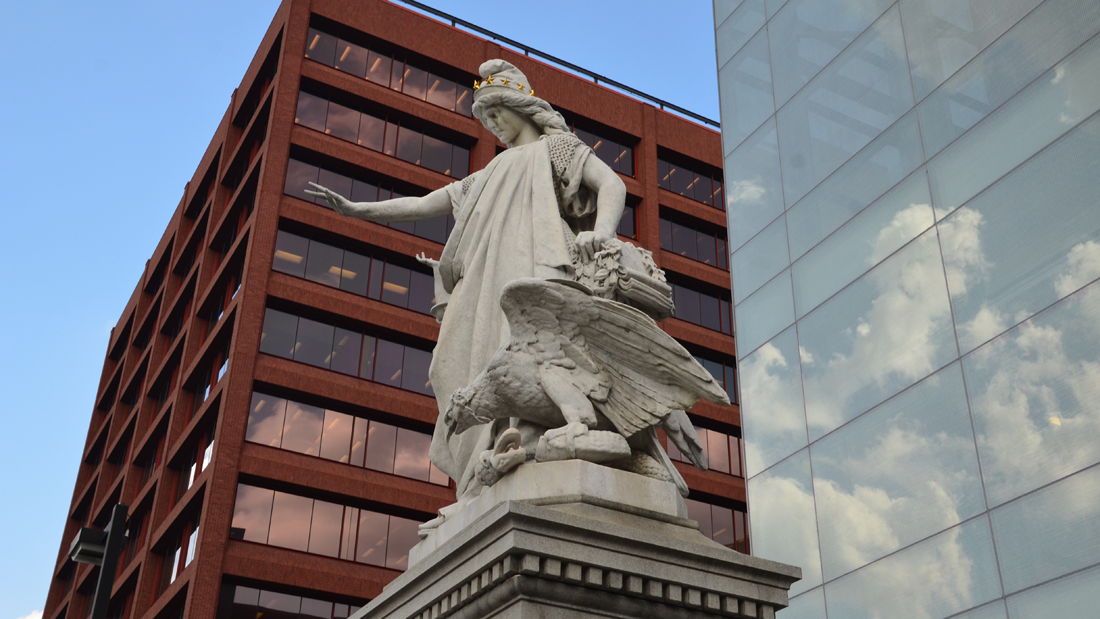
The complex iconography of Religious Liberty, whose cap is adorned with 13 gold stars, was described by the artist in the Roman newspaper Il Diritto: “[Religious Liberty] represents Republican Freedom, in the figure of a woman eight feet high holding in her left hand the laws of equality and humanity, and symbols of victory; in her right, the genius of Faith raising the burning torch of religion. . . . The crown of laurel, the instrument of the American Constitution, the colossal eagle crushing the serpent (the symbol of tyranny) typify the glory and the power of the country of Washington.”
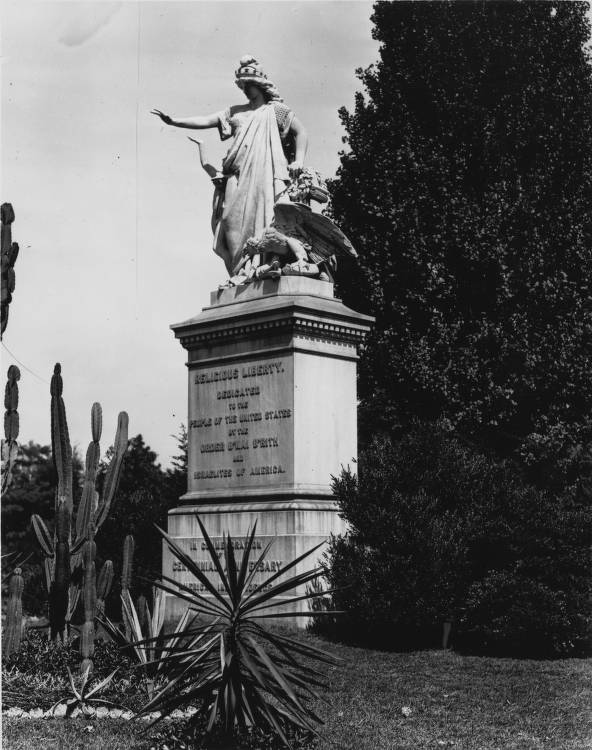
Ezekiel was born and raised in Richmond, Virginia. He moved to Berlin in 1869 to study at the Royal Art Academy and in 1873 was awarded the Michel Beer Prix de Rome but deferred the scholarship for a year in order to work on Religious Liberty, his first major commission, sponsored by the American chapter of the Jewish charitable organization B’nai B’rith. His concern for perfecting the piece, as well as his insistence on exhibiting it first in Rome, where he had set up studios, prevented Religious Liberty from arriving in Philadelphia in time for the Centennial. It was dedicated on Thanksgiving Day, November 30, 1876, in Fairmount Park. The monument was relocated by the B’nai B’rith in 1984 to a site near the National Museum of American Jewish History and the Liberty Bell.
Adapted from Public Art in Philadelphia by Penny Balkin Bach (Temple University Press, Philadelphia, 1992).
RESOURCES
This artwork is part of the Around Old City tour
